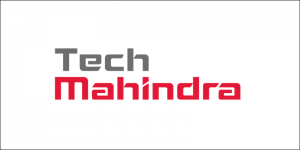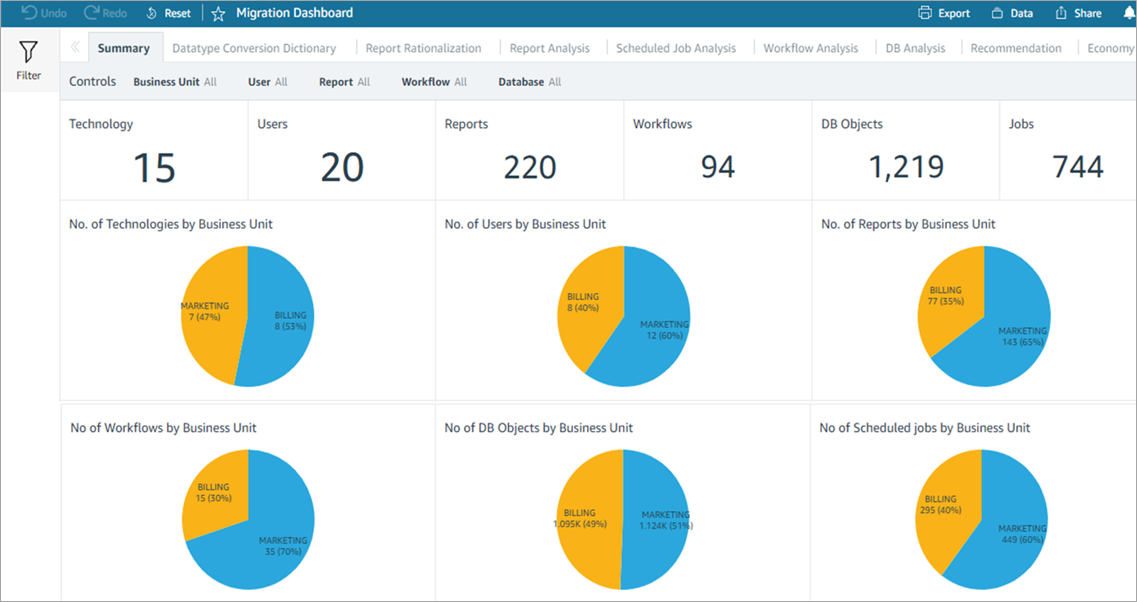AWS Partner Network (APN) Blog
How Tech Mahindra’s InfoWise Accelerates the AWS Cloud Journey Through Data Modernization
By Ezhilarasan Maharajan, Principal Consultant – Tech Mahindra
By Nirmalya Chattopadhyay, Solutions Architect – Tech Mahindra
By Sathish Arumugam, Partner Solutions Architect – AWS
 |
| Tech Mahindra |
 |
Data modernization is all about moving data from legacy databases into modern databases. It helps organizations consume and interpret information so they can anticipate market changes and improve business outcomes.
Cloud migration commonly refers to the process of moving tools and data from old/legacy infrastructure or on-premises data centers to the cloud. The entire journey can be described by the following lifecycle:
- Search and discover
- Plan and strategy
- Build and migrate
- Test and validate
- Monitor and report
- Operate and optimize
This post talks about how InfoWise, a Tech Mahindra solution, accelerates the first two stages of the cloud data migration and modernization journey: search and discover and plan and strategy. The search and discover phase assesses inventory of on-premise application by extracting the metadata from a variety of data sources like databases, ETLs, reports, and audit data. InfoWise also helps recommend the migration priority by running various dependency intelligence across all the metadata objects.
Tech Mahindra is an AWS Premier Tier Services Partner and Managed Service Provider (MSP) specializing in digital transformation, consulting, and business re-engineering solutions. Tech Mahindra works with diverse customers across industries, including telecommunication, automotive, retail, and financial services.
Challenges in Maintaining Data on Premises
In an on-premises data center environment, capacity planning for an application’s infrastructure storage requires maintaining costly hardware and upgrade time according to the size of the business. Continuous hardware upgrades are needed to run the application using the latest technology, which incurs additional time and cost.
Additionally, having security in place for the on-premise environment requires integration of multiple third-party solutions, incurs high cost and effort for setting up high availability and disaster recovery, and hinders time to market.
Data Modernization Helps Address On-Premises Challenges
The migration of data to the cloud can help mitigate challenges such as elasticity, scalability, and reliability. It also has faster time to market for business applications, with less cost. It is easier to have all security controls in place for the applications using cloud-native solutions and other third-party solutions. The data modernization journey in the cloud helps organizations improve productivity and optimize business processes, as well as speed and scale up innovation.
Lack of Audit and Assessment Impacts Migration
- Migration of projects can be impacted from a lack of understanding the assets and their dependencies.
- Without a proper or partial assessment, it’s difficult to understand the overall assets, dependency, and inherent complexity.
- Having no assessment can lead to an improper prioritization and migration planning. It’s like taking assumption-based decisions rather than data-driven informed decisions.
- Without an assessment, it can be challenging to come up with the planning and estimation towards cloud infra requirements and operational expectations.
- Unclassified assets can cause the system to end up with non-compliant data, unused/junk, and duplicates assets into cloud.
- Without a strategy, the project continuity/disconnection with dependent assets can be delayed or cause unnecessary expenses that lead to migration failure.
Introducing Tech Mahindra’s InfoWise
InfoWise is Tech Mahindra’s metadata management tool which connects to various data sources to extract metadata, usage/audit data, and operational data to enable and accelerate data modernization, metadata governance, data analytics support operations, and data observability services.
Once the metadata is available within InfoWise’s knowledge graph and repository, the solution will enable and accelerate metadata-driven modernization through a data and analytics platform audit, report rationalization, and cloud migration recommendation sub-services.
In this section, we explore data modernization and dependency sub-services:
- Data and analytics platform audit: This discovery sub-service extracts various system objects like databases, ETLs, reports, and usage/audit details that are associated with the system. It helps to enlist and categorize them in a central knowledge graph while enabling users to understand the available, used, and unused inventories and their usage pattern within the various systems.
- Report rationalization: This sub-service helps identify duplicate and aging reports in the systems and isolates the active set of reports that will be migrated into the modern data platform. It recommends eliminating unwanted, unused, duplicated, and aged reports which helps keep the asset inventories clean.
- Cloud migration recommendation: This sub-service helps minimize the risk of migration failure and finds the dependencies between system objects that were collected in the platform audit phase. For example, it identifies all of the tables/views used in various SQLs, stored procedures, reports, and ETLs. It also recommends the list of objects and dependencies to be migrated in a systematic/phased manner, and is based on a complex machine learning-driven algorithm and priority classification.
Using the InfoWise sub-services recommendation, customers can follow the strategic plan and prioritize toward their modernization journey to overcome any potential migration failure scenarios.
Solution Overview
InfoWise is a disruptive and intelligent metadata management solution designed to provide an enterprise view of business applications’ characteristics. This includes mapping from source to consumption, application inventories, applications’ executional behavior, consumption of business assets, real-time alert/impact, and proactive monitoring.
InfoWise comes with various pre-build adaptors which help to configure and extract metadata, as well as usage/audit data through simple responsive and user-friendly graphical interfaces. InfoWise core services analyze the metadata and classify them into various categories. Using machine learning (ML) algorithms, it prioritizes and recommends the asset migration with multiple phases along with the dependencies to ensure 100% success is achieved in each migration and modernization journey.
Key features and sub-services of the InfoWise solution include:
- Data modernization service
- Data and analytics platform audit
- Report rationalization
- Cloud migration recommendation
- Data and analytics support operations service
- Data ingestion and live monitoring
- BI on BI service, which is intended to optimize cost for the existing analytics ecosystem
- Database query monitoring
- User adaptability
- Data governance service
- Metadata repository for search and listing
- Data lineage
- Impact analysis
- Business glossary
- AI-enabled automatic glossary to technical mapping (data catalog)
- Business-to-technical traceability (self-service capability)
- Metadata reporting
- Data observability service
- Real-time alerts and notification
- Proactive monitoring
Some of these features and sub-services can be combined as a package solution for select business cases. In the following section, we discuss in detail the data modernization service.
InfoWise Implementation Approach on AWS
InfoWise follows a systematic approach to come up with recommendations for data modernization and migration. The following figure shows on how the solution is divided into several phases.
Figure 1 – InfoWise implementation approach.
- Configure adaptor: In this phase, the adaptor for each metadata source is configured to extract metadata from that source.
- Collect metadata: This is the second phase in which the metadata for each source system is collected through the respective in-built adaptor and stored in the InfoWise repository.
- Analyze the metadata: The metadata is required to be analyzed after being collected. Users can view the metadata through the repository and search, which helps to enlist all of the items that need to be migrated. There are also services to view the lineage among metadata objects, which helps determine the dependency among objects.
- Identify unwanted/unused assets: This phase finds all of the unused and unwanted objects to clean the inventory, and determines the required assets to be migrated. InfoWise helps to locate all such assets.
- Identify migration prioritization: This phase determines the sequence or priority to move assets to the cloud. InfoWise has weightage schemes that determine the priority of the assets by analyzing dependencies.
- Recommend migration priority: Based on the outcome of the prior assessment phase, asset migration is prioritized and the migration phase is determined. This helps to systematically roll out the migration.
Solution Architecture
InfoWise requires the following components to be deployed on Amazon Web Services (AWS). The architecture (Figure 2) explains the types of data sources ingested to InfoWise and assessed to provide reports through the Amazon QuickSight dashboard.
- Amazon EC2: Using Amazon Elastic Compute Cloud (Amazon EC2), InfoWise can be launched securely into AWS.
- Amazon Relational Database Service (Amazon RDS): InfoWise stores metadata in relational as well as graph databases. For relational databases, it uses Amazon RDS which supports various relational database management system (RDBMS) engines like Oracle and MySQL.
- Amazon Virtual Private Cloud (Amazon VPC): This is the network layer for Amazon EC2, enabling users to launch the AWS resources into their own defined virtual network, such as the network of their own data center.
- AWS IAM: InfoWise components and services were controlled by AWS Identity and Access Management (IAM), and the respective IAM users can be created under a single AWS account for the entire InfoWise.
- AWS Security Group: This acts as a virtual firewall for the Amazon EC2 instance which controls the incoming and outgoing traffic for InfoWise.
- AWS Directory Service: This enables AWS resources to use managed Active Directory (AD) in AWS.
- Amazon CloudWatch: This is used to monitor the availability and utilization of InfoWise components in AWS.
- Amazon SNS: Amazon Simple Notification Service (Amazon SNS) provides the message to the subscriber regarding any InfoWise new release, newly-added feature, and InfoWise-generated alert or notification.
- Amazon QuickSight: This makes queries through natural language processing (NLP) for InfoWise metadata. Users can get information about business and technical metadata without making any technical query or knowing detail about business intelligence. QuickSight provides the complete pre-build standard InfoWise’s cloud migration recommendation dashboards.
Figure 2 – InfoWise solution architecture.
Sample Recommendation Dashboards
InfoWise delivers data modernization and recommendation outcomes through Amazon QuickSight dashboards.
Data and Analytics Platform Assets Overview
The data and analytics platform highlights assets and categorizes them by technology, business unit, and workflows.
Figure 3 – Data and analytics platform assets overview.
Report Rationalization
This dashboard highlights used, unused, active/inactive, aged, and duplicate assets for instance insights and hygiene of the reporting platform.
Figure 4 – Report rationalization dashboard.
Database Analysis
This dashboard provides a single and centralized view of the complete databases. It highlights object usage, used/unused objects, storage utilization, and query execution which can be analyzed through the output shown in Figure 5.
Figure 5 – Database analysis.
Recommendation Analysis
The migration recommendation and priority are highlighted in Figure 6. Users can view the migration recommendation by reports, groups, departments, and even dependencies.
Figure 6 – Recommendation analysis.
Customer Benefits
- Modernization and transformation total cost of ownership (TCO) is reduced.
- Strategically helps to prioritize asset migration and align with organizational preferences.
- Reduce re-engineering efforts in target ecosystem.
- License cost optimization in target environment.
- Storage and computation cost optimization on cloud ecosystem by way of on-premises data and analytics platform inventory rationalization.
- Regular monitoring of “analytics resource consumption” that maximizes utilization and efficiency.
Summary
This post explored how Tech Mahindra provides customers with a sustainable data modernization and migration recommendation solution using InfoWise and AWS services.
Without a modernization strategy, customers may end up getting unwanted downtime, excess investment, poor quality service and carry forward legacy, and dead-weight assets into the modernized platform. To achieve success, organizations can leverage the mandatory audit, cleansing, and strategical cloud migration recommendation service provided by InfoWise.
InfoWise helps businesses systematically optimize their cloud transformation journey by identifying unwanted assets and unused reporting licenses. Detailed discovery of data helps InfoWise to consolidate assets and prioritize the migration based on a business-critical weightage centric approach.
To learn more about InfoWise, watch this video.
Tech Mahindra – AWS Partner Spotlight
Tech Mahindra is an AWS Premier Tier Services Partner and MSP that specializes in digital transformation, consulting, and business re-engineering solutions.






